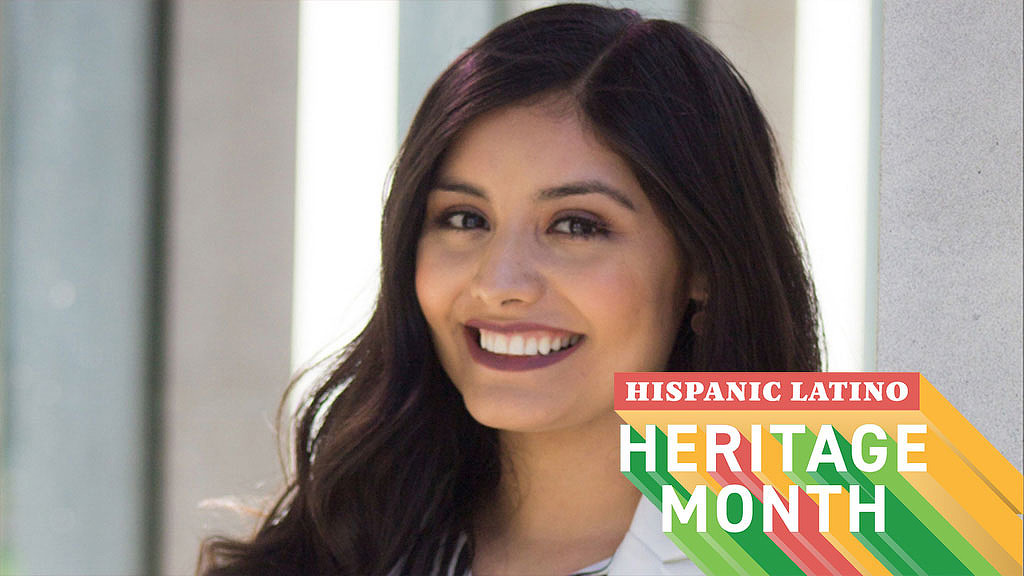Gensler Voices: Deysy Cruz Escobar on Why Underrepresented Communities Should Have a Voice in Design
October 01, 2021
This Q&A is part of a series of interviews with Gensler architects, designers, and others in the firm about their career journey, and the impact that design and architecture can have on our communities and the human experience. Here, we sit down with Deysy Cruz Escobar, technical designer, Gensler Atlanta:
What was your first introduction to the field of architecture and design?
When I was in high school, I was encouraged to join the ACE Mentorship Program. I attended ACE open minded and eager to see what the architecture, engineering, and construction field was all about. Every week, professionals such as architects, structural engineers, contractors, and interior designers would come work with us to design a year-long project. During the first couple of sessions, I found myself continue to grow more curious and excited, specifically about architecture. I began to understand that an architect has to know a little about everything to coordinate and make the best design decisions. I fell in love with the design process and how integrated and collaborative it is with other disciplines, professionals, and most importantly, communities. I was fortunate to have been awarded scholarships that presented me with the opportunity to attend Iowa State University and enroll in their five-year architecture program.
What was an early experience that influenced your career?
My family moved to the United States when I was three years old. Growing up, I remember always having to translate and interpret everything for my parents — from legal documents to school registrations. There were many occasions when I oversaw navigation, this extended from reading the atlas, to navigating through cities, to reading signage in schools and hospitals. I remember wishing there was better way finding through buildings for non-native English speakers. As I recall the language barrier, I am aware that there are still many families living in the U.S. from all over the world who undergo the same situation. While it wasn’t always fun to have to translate everything, I am thankful this experience made me more driven to continue searching for solutions for underrepresented communities to have a voice in the design decisions that characterize our communities.
How has your career shaped your understanding of the world?
Although I just transitioned into the profession, I have learned how designs shape cities and influence lives for the better or worse — from social housing incidents, such as Pruitt-Igoe, to the current rethinking of social housing work of Alejandro Aravena. I’m eager to see how my understanding of the world will continue to evolve with time, experience, and my exposure to various environments.
How can architecture and design can advance wellness, equity, and inclusion?
Everything we do is centered around people and elevating the human experience. We must take responsibility and acknowledge that the decisions we make not will not only affect people but can extend to various ecosystems and environments. It is important to recognize different communities, cultures, and backgrounds. Take the time to place yourself in various shoes and try to gain a better understanding of how others view the world and their environments.
What role does architecture and design play in shaping the minds of future generations?
Architecture is constantly changing and evolving, as cutting-edge technology and new social norms unfold before us. Architecture and design foment creative thinking, constantly pushing us to challenge paradigms. Design should inspire future generations to create what does not yet exist or become inspired by existing immersive designs and how they have impacted past generations.
The most important thing I've learned as an architect/designer is...
Allow yourself to fail, give yourself some grace, and enjoy the process. Design is a very iterative and collaborative process, and sometimes we get so wrapped up in perfecting the final product that we forget to be present in the moment with our team.
If you could choose anyone, who would you like to design a project for?
I would love to design a project for my parents. I am very proud of my roots. My parents took a leap in moving to a foreign country where they didn’t know the language to allow my siblings and I to realize our dreams. I wouldn’t be the person I am today without their high expectations, love, and encouragement.
Name a building or space that every designer should see in person.
I spent a summer studying abroad in Spain and fell in love with the culture and rich architecture. It was my first time being overseas and seeing architecture that I had learned about in history classes in person. If you happen to find yourself in Barcelona, La Sagrada Familia is a space that you should experience at least once in a lifetime.
For media inquiries, email .
